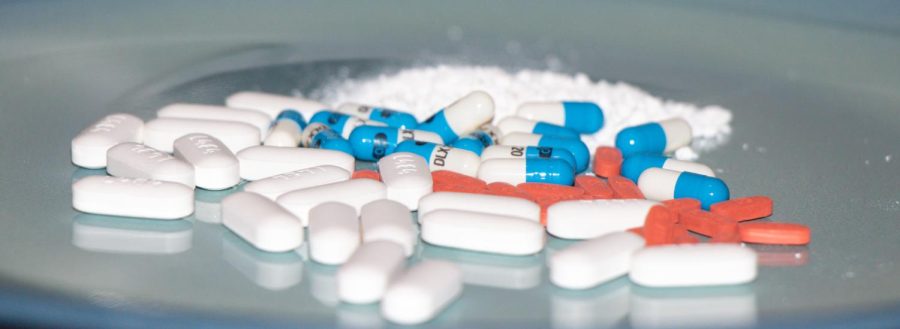Corvallis sees surge in fentanyl seizures, police department says
November 2, 2022
While the Corvallis area has seen an increase in fentanyl over the past few years, the rollout of funding to counter fentanyl has been slow, according to officials.
“Prior to around 2019, counterfeit pills containing fentanyl were not a common form of illicit controlled substance in the Corvallis area,” said Gabriel Sapp, Lieutenant with the Corvallis Police Department. “Since that time, the prevalence of counterfeit pills containing fentanyl has dramatically increased year over year.”
In 2020, Oregon voters passed Measure 110, which decriminalized personal possession of small amounts of illegal drugs, including fentanyl. Along with this, Measure 110 directs millions of dollars from the Oregon Marijuana Fund to the Drug Treatment and Recovery Services Fund.
Over the 2021-2023 biennium, the Drug Treatment and Recovery Services Fund was expected to receive $229 million in marijuana tax revenue.
“Measure 110 funds low-barrier substance use disorder treatment, peer support and mentoring,housing services, harm reduction intervention, and supported employment for people who use substances or have a history of substance use,” said Kailee Olson, Communications Coordinator for the Benton County Health Department.
According to Olson, all of these services have been funded in each of the 36 counties in Oregon, including Benton County.
However, according to Dina Eldridge, Housing Services Manager for the Community Services Consortium, the release of this funding hasn’t been without problems.
“Unfortunately, the rollout of the funding that was supposed to come from Measure 110 has been pretty slow,” said Eldridge. “It’s leaving quite a gap.”
In the meantime, Measure 110 has also had a significant impact on the Corvallis Police Department’s response to fentanyl.
“Under Measure 110 enforcement of controlled substance offenses has become increasingly difficult for law enforcement,”Sapp said.
The standard of proof needed to conduct a stop and search changes, Sapp said, based on whether an offense is a violation, which fentanyl possession is now, or a criminal offense, which fentanyl possession was previously classified as.
While police say Measure 110 has made responding to fentanyl more difficult, according to the Benton County Health Department, there is no data currently connecting Measure 110 with the rate of substance use.
Statewide, Oregon saw an increase in both opioid overdoses and deaths in 2021, driven in part by an increase in synthetic opiates such as fentanyl, according to an Oregon Health Authority press release. In addition, emergency medical services personnel administered naloxone– a drug that rapidly reverses opioid overdoses—5,556 times 2021, up from 3,758 times in 2019.
“Our Harm Reduction team has recorded more than 80 community-reported opioid overdoses that were successfully reversed by a community member administering naloxone in 2022,” said Olson. “This does not include overdoses reversed by first responders such as police, fire, or EMTs, or unreported reversals outside of our distribution program.”
Naloxone is available from the Benton County Harm Reduction Program for free, and individuals in Oregon can also request a prescription for naloxone.
One thing officials have stressed is that any pill of unknown origin may contain fentanyl.
“Unless a pharmacist directly hands you a prescription pill, assume it is counterfeit and contains fentanyl,” said the OHA in a September press release, adding “assume any pills obtained from social media, the internet or a friend are counterfeit and contain fentanyl.”
“Fentanyl has been found in drugs sold as heroin, cocaine, methamphetamine, and pressed pills,” Olson said, “including…those sold as Oxycodone, Xanax, Adderall, and MDMA.”
“If you are using pills,” the OHA said, “don’t use alone and always have naloxone on hand and visible.”


















































































![Newspaper clipping from February 25, 1970 in the Daily Barometer showing an article written by Bob Allen, past Barometer Editor. This article was written to spotlight both the student body’s lack of participation with student government at the time in conjunction with their class representatives response. [It’s important to note ASOSU was not structured identically to today’s standards, likely having a president on behalf of each class work together as one entity as opposed to one president representing all classes.]](https://dailybaro.orangemedianetwork.com/wp-content/uploads/2025/03/Screenshot-2025-03-12-1.00.42-PM-e1741811160853.png)

























